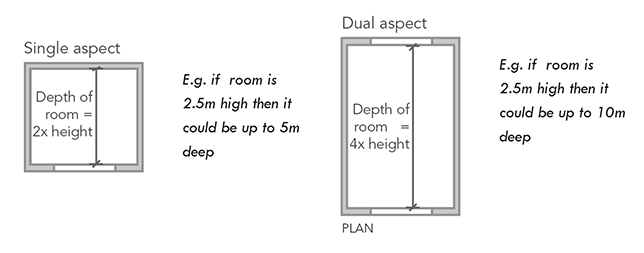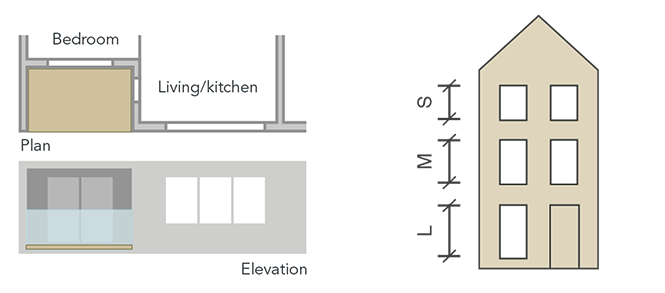Designing for daylight
Daylight is not solely dependant on orientation. While a room facing north will not receive direct sunlight, it can still be adequately daylit as it receives diffuse light (i.e. reflected or scattered light). The amount of daylight a room receives is dependant on: external overshadowing from neighbouring buildings, overhangs or balconies; the size and location of windows; the depth of the room; the materials and colours used; and the visible light transmittance of the windows. The BRE “Site layout planning for daylight and sunlight” provides guidance on how to calculate internal daylight levels.
Room layout
Reducing room depth, taller ceilings and higher window heads all allow more light to enter further into the room reducing the need for artificial lighting. Ground floor rooms in buildings receive less daylight than upper floors, so it is sometimes useful to have larger areas of glazing on the lower floors. However, orientation, privacy and security should be considered. Nearby obstacles such as buildings and trees, will reduce the daylight the rooms receive. Windows in alcoves, beneath overhangs and on inset balconies receive less daylight.
Materiality
Using light-coloured materials around windows helps reflect daylight into buildings with overhangs or inset balconies. Also consider perforated or simple railing balustrades to allow light through. Using lighter coloured finishes internally increases light reflectance inside a room while also improving the perception of light.
Design Actions
- Reduce room depth and increase floor to ceiling height to maximise daylight penetration.
- Consider larger windows at ground floor
- Lighter colour materials should be used to increase light reflectance in a room
Page updated: 27/09/2022

